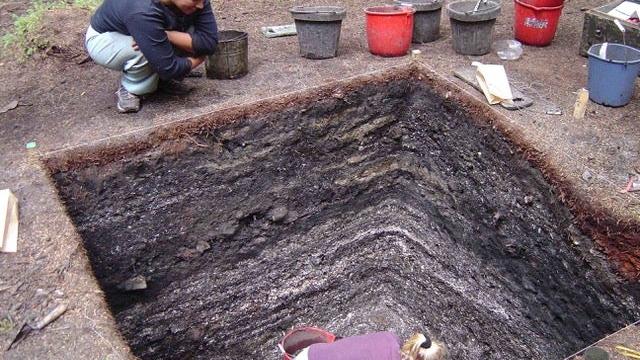Before European colonizers arrived in the Americas and other parts of the world, Native peoples were cultivating tons of seafood — specifically oysters — the right way for millennia.
A new report in the journal Nature Communications finds that Indigenous communities across North America’s coasts and Australia have successfully harvested local oysters for several thousand years, without depleting the mollusk populations or causing major damage to the surrounding ecosystems. Researchers think that learning more about Indigenous harvesting practices could help inform future oyster management systems.
The evidence of this is found in huge oyster shell mounds across both coasts and in Australia. According to the study, the size of the mounds highlight that the communities harvesting the oysters were able to do so over long periods of time. One midden, as these mounds are called, is on Fig Island, South Carolina, and it holds about 75 million oyster shells; a site in Saint Helena Island in Australia contains an estimated 50 million oyster shells that were likely harvested over 1,000 years.
Some of the oldest oyster middens studied in Massachusetts and California date back over 6,000 years, and some of the longest-used sites span an estimated 5,000 years — a testament to the communities that lived in those areas.
Torben Rick, an anthropologist with Smithsonian’s National Museum of Natural History, said this study was inspired in part by a 2004 paper that outlined the collapse of more than two dozen fisheries along North America’s coasts and Australia’s east coast. Rick pointed out that the study looked at commercial oyster fisheries that were founded after Europeans forcibly removed Indigenous communities. A post-settler capitalist system didn’t take sustainability and viability for future oysters to spawn into consideration when harvesting for profit.
“[Commercial harvesting] depletes one area — they start working their way down to a new area, so they’re going from the Boston Harbour area down into New York and then down into Chesapeake Bay, and then finally around into Louisiana,” Rick told Earther.
Rick said that this study’s findings show how communities can consume animal products in a sustainable way, if it’s done locally and if the ecosystems where the food is harvested are maintained. A far cry from modern commercial fishing that often relies on bottom-trawling, a destructive technique that uses huge nets to drag up everything from the seafloor, ripping up corals, oyster beds, and marine plants that different animals need to thrive. Environmental groups have connected bottom-trawling to overfishing, especially because the method isn’t selective and the damage doesn’t allow marine environments to recover.
In contrast, the huge oyster mounds that exist in North America and Australia have proven that communities can sustain themselves partially from oysters and other seafood without depleting the environments they depend on. Researchers mapped information about Indigenous communities and their oyster harvesting by carbon-dating shell mounds, mapping out oyster beds, and collaborating with Indigenous partners to fill in some information gaps about the communities that created the shell middens.
“To provide the context of those commercial fisheries, we needed to look at that archaeological record and work with Indigenous partners to understand what those fisheries were like and how they may be able to help us make decisions in the future,” Rick said.
Bonnie Newsom, an assistant professor of anthropology at the University of Maine and citizen of the Penobscot Indian Nation, is a co-author of the study. She contributed information on oral narratives about Indigenous communities and their connection to oysters. When asked why Native peoples were able to sustain the mollusk populations, she said: “I suspect it has to do with different views of how people view the species, different worldviews in terms of the relationship between human and species. There’s this notion of giving back to the species and treating [them] with respect. I don’t know if that extended to clams and oysters, but I certainly know it extended to things like salmon and other other species here in Maine.”
Newsom emphasised that tribal nations should be part of future sustainability plans and maintaining local food systems. “It’s not just, ‘OK Indigenous peoples… we’ve kind of screwed up this environment… now help us,’” she said.
There have been some recent efforts to include tribal knowledge in conservation efforts. In Northern California, the Yurok Tribe assisted in efforts to revive populations of wild condors by leading the release of two of the birds into their ancestral lands. Tribal members are also trying to revive wild salmon in the state.
